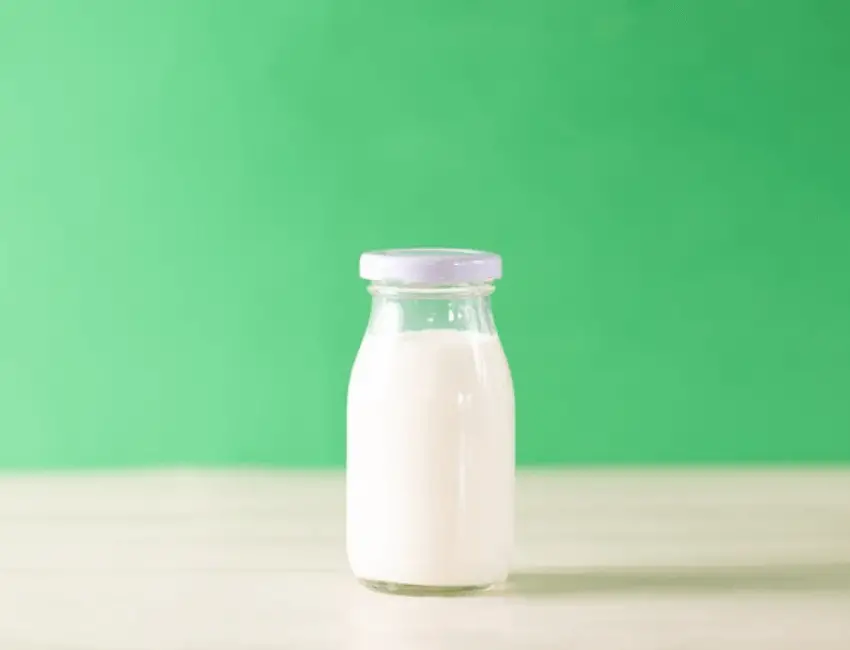Heavy cream is a delicious and versatile ingredient that can be used in many recipes. Whether it’s in soups, sauces, candy, or desserts, heavy cream is a staple in many kitchens. However, for those who are lactose intolerant or have a milk allergy, consuming heavy cream can be a concern.
This article will inform you of the lactose in heavy cream and how it compares to other dairy. Let’s explore the topic!
What is Lactose?
Lactose is a type of sugar found in milk and dairy products. People who are lactose intolerant do not produce enough the the enzyme lactase in the small intestine to be efficiently digest lactose. When lactose is not properly digested, it can cause uncomfortable symptoms such as bloating, gas, and diarrhea.
Is There Lactose in Heavy Cream?
Yes, heavy cream contains lactose. It is made by skimming the fatty layer off the top of whole milk. While it is a dairy product, heavy cream has a lower lactose content than milk. According to MedicineNet, a 1 tablespoon serving of heavy cream contains approximately 0.5 grams of lactose. Furthermore, a one cup serving contains about 8 grams of lactose. In comparison, a 1 cup serving of whole milk contains about 12 grams of lactose.
Research has found that people with lactose intolerance can generally handle up 12 grams of lactose at one time. Additionally, it has been determined that they can also consume up to 18 grams of lactose spread out during an entire day.
Therefore, many people with lactose intolerance will be able to handle the lactose content of heavy cream as long as it is consumed in moderation. Of course, the other dairy you consume in addition to heavy cream should be considered. People who are severely lactose intolerant or have a milk allergy should avoid heavy cream altogether unless advise by a qualified medical professional otherwise.
It’s important to note that not all heavy cream is created equal. Some brands may contain more lactose than others, depending on how the cream is processed. Unfortunately, lactose content of individual products is not readily available (i.e. printed on the label).
If you’re unsure about whether you can consume heavy cream as it relates to your health, it’s always best to check with your healthcare provider. They can advise you on whether it’s safe for you to include heavy cream in your diet.
Lactose-Free Heavy Cream Substitutes
Dairy manufacturers are able to make lactose-free dairy products by adding an enzyme called lactase to them. The lactase breaks down the lactose in the milk allowing for the creation of lactose-free dairy.
However, lactose-free heavy cream isn’t sold to our knowledge and if it is, it certainly isn’t popular. However, you may wish to use one of these dairy-free and/or lactose-free heavy cream alternatives:
- Silk Dairy-Free Heavy Whipping Cream – It’s made with filtered water, coconut oil, and sunflower oil as its primary ingredients. It is also dairy-free and vegan.
- Land O Lakes Lactose-Free Half & Half – This is a dairy product with lactase added to make it lactose-free. Yes, its not heavy cream but it can be used as a substitute in certain circumstances. Organic Valley also makes a lactose-free half & half if you are looking for an organic option. You can make half & half more like heavy cream by adding butter to it. Add 1/8 cup of somewhat cooled melted butter to 7/8 cup of lactose-free half & half and thoroughly whisk the ingredients together. Be aware that it will not whip to stiff peaks.
- Coconut Cream – Coconut cream is dairy-free and lactose-free despite the word “cream” being in its name. Be aware this product is different from the much thinner coconut milk. You can use coconut cream as a 1-to-1 substitute for heavy cream in recipes. It’s a good choice for whipping.
- Lactose-Free Greek Yogurt + Lactose-Free Milk – Simply mix a lactose-free Greek yogurt such as Fage BestSelf Lactose-Free Greek yogurt with a lactose-free milk like Lactaid until you get a consistency like heavy cream. It will be close to a 50/50 mix of yogurt and milk to get a texture close to heavy cream. Use it in sauces and soups.
- Lactose-Free Milk + Cornstarch – Add two tablespoons of cornstarch into a cup of lactose-free milk and stir thoroughly. Use this when heat is involved (i.e. in soups, pasta sauces) which will allow the milk/cornstarch mixture to thicken.
Final Thoughts
In summary, heavy cream does contain lactose, but in lower amounts compared to milk. People who are lactose intolerant may be able to tolerate a reasonable amount of heavy cream as outlined above, while those who are severely lactose intolerant or have a milk allergy should avoid it altogether. If you wish to avoid lactose altogether, there are plenty of lactose-free heavy cream substitutes you can consider that won’t leave you worried about the potential unpleasant symptoms of lactose intolerance.

